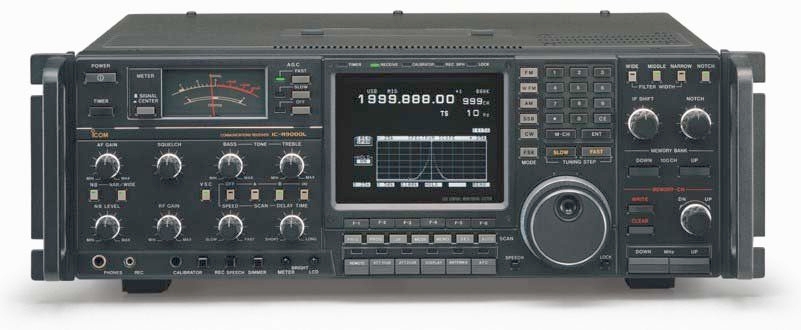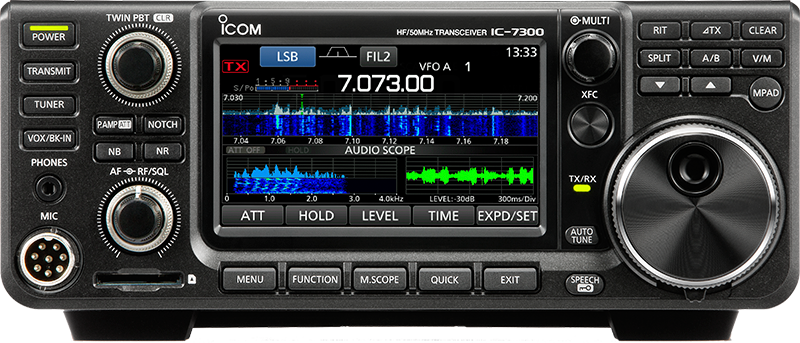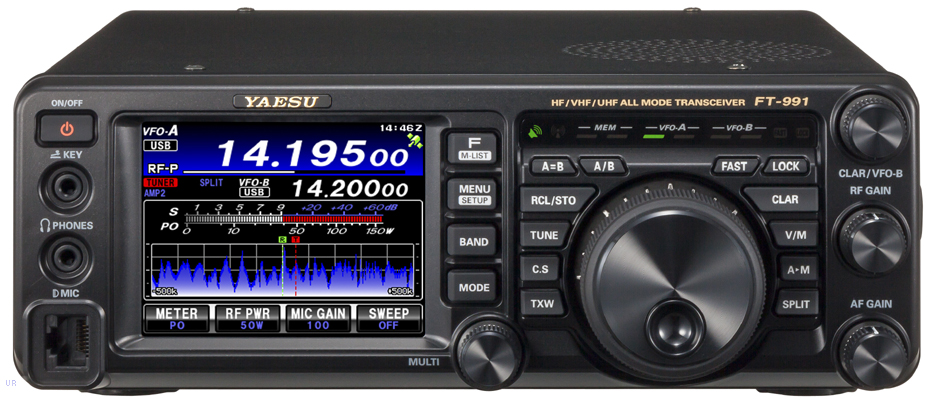It’s no secret that a modern radio transceiver has more in common with your average laptop computer than your faithful old TS-440S. The proliferation of SDR and DSP technologies now enables modest midrange ($1-$2k) transceivers to do things that were once the realm of $10k plus radios that we used to dream would one day (gloriously) adorn our shacks. Here’s the object of my (unlicensed) desire from my teenage years, the Icom ICR-9000 – Clive Robertson had one, and wrote a special review of it for Amateur Radio Action in August 1991!

If you’d told me back then that in 25 years I’d get most of its features with a $20 peripheral that would connect to my PC, and that all the RF processing would occur in software, I’d have dismissed you as a nutter very, very quickly.
Of course, times change and the march of technology rolls on. Today we have internet connected digital voice modes, colour touch screen control panels, USB computer interfaces, advanced noise reduction & filtering and colour spectrum scopes – all of which are driven by embedded software (technically software in hardware, aka firmware)
2016 has bought us the first 100% SDR based rig from one of the “Big Three” – have a look at the new Icom IC-7300 – the first direct sampling radio where RF signals are directly converted to digital data before being processed in a FPGA (Field-Programmable Gate Array). Direct sampling simplifies circuit construction and reduces noise that can mask weak signals, makes for a smaller radio and gives us a stunning real-time spectrum scope as a bonus. This radio redefines what’s possible in an $1800 rig in both features and performance, and it’s only going to better as the software driving it is tweaked over time.

Another rig that’s really popular in our club is the Yaesu FT-991. It ticks all the boxes with its all-band all-mode design, advanced DSP, compact size, inbuilt tuner, C4FM digital support and colour touch screen (all for around $1600).

It’s a good performer, but it was plagued by software issues in its early days which have been addressed over time with the release of upgraded firmware that’s able to be applied by the end user. The FT-991 has no less than 4 firmware components: Main, DSP, TFT Display & C4FM. To date there have been 8 revisions of the firmware with countless bug fixes, performance improvements and some notable feature additions. If you haven’t upgraded, you’re missing out.
If you’ve got a modern radio (base, mobile or handheld), particularly from the “Big Three”, then be sure to regularly check the manufacturers webpage for firmware updates. After all, it’s a free upgrade for your precious (and no doubt expensive) rig. When applying upgrades, read the firmware update instructions (twice!) before commencing an upgrade and it’s always a good idea to have a PC based backup of your rig’s settings on hand (as a firmware update often requires a factory reset on completion).
It’s a brave new world. If it’s driven by software, it can be upgraded, improved, bugs can be fixed, new capabilities can be added and (for better or worse) it can be hacked.
Paul, VK2ICQ
